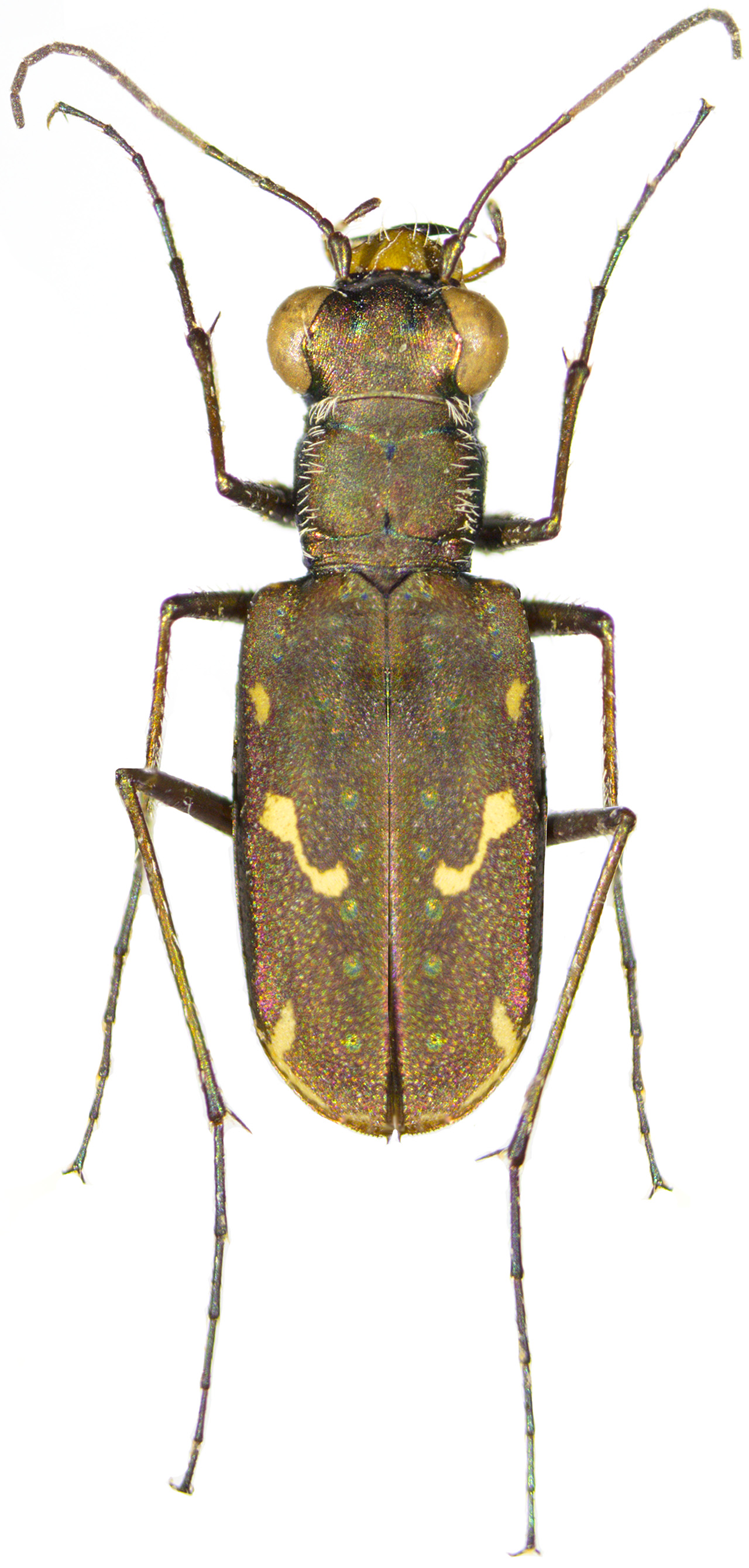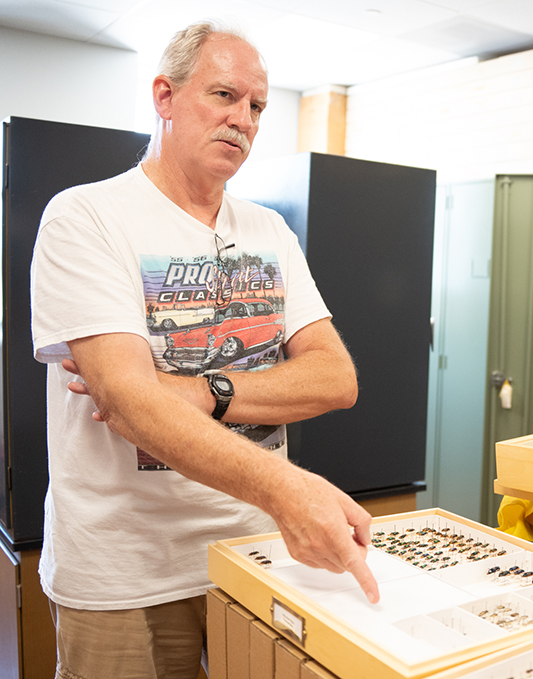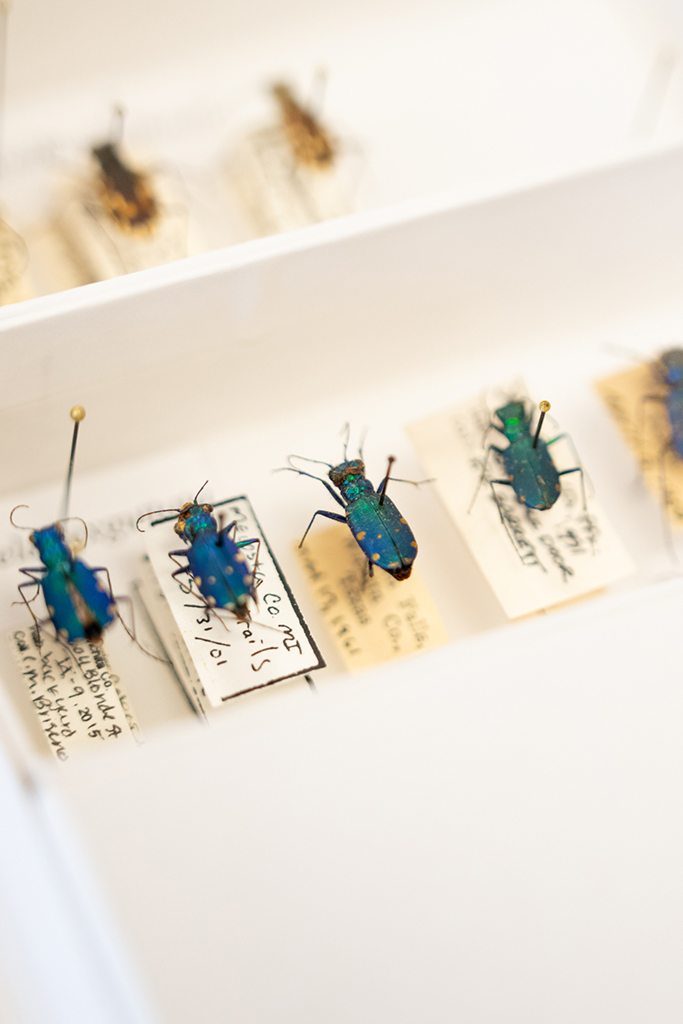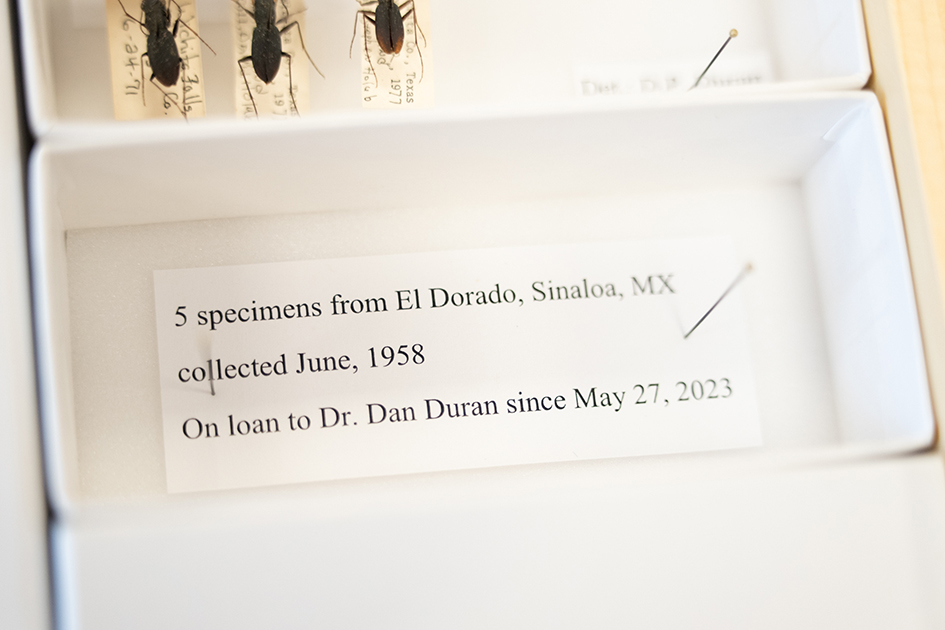Biology’s insect collection plays pivotal role in tiger beetle ID
Daniel Duran, assistant professor and naturalist at the public research Rowan University in New Jersey, is a recognized expert on the feisty tiger beetle family (Cicindelidae). He’s one of the authors of A Field Guide to the Tiger Beetles of the United State and Canada: Identification, Natural History, and Distribution of the Cicindelinae.
Duran had heard about the insect collection at Midwestern State University, which contains some specimens collected more than 70 years ago by the late biology professor emeritus Walter Dalquest, with several specimens only known from this collection, so he contacted Associate Professor of Biology Roy Vogtsberger. Duran had received a grant to study tiger beetles in Texas and while in the state, hoped to see the extensive MSU Texas collection.
When Duran viewed the collection, he saw five tiger beetles from Mexico, all collected by Dalquest in 1958, and was fascinated. He hadn’t seen others like them before. Was this a new species or an unknown color variation of a recognized species? “Those were really weird,” he said.
Proper scientific descriptions can be pages long as they define all the characteristics of the species and detail each feature and part of the beetles. The description for the species of Mexico beetles was short. The only other known description of that particular tiger beetle was written in 1881 by famed naturalist Henry Walter Bates, but it was considered inadequate when Duran compared the specimens in the MSU Texas collection to the description. Duran said he felt like they were a recognized species but an unusual color variety that was unknown.
As fascinated as Duran was by the beetles, he was also impressed by the MSU Texas collection as a whole. Duran said that it was much better than most small universities, thanks to the professors who added to the collection through the years, and especially the specimens brought by Dalquest.
“Hundreds of insects in the collection are from Dalquest’s Mexico and African trips,” Vogtsberger said. Even though Dalquest was more a vertebrate biologist, he started the insect collection back in the 50s, as he brought back specimens from his research trips in the infancy of the MSU Texas biology department.
“Dalquest got a bunch of cool stuff. He’s a big part of what makes this collection special,” Duran said. “It only takes one specimen to help make a collection special and Roy has done an impressive job of keeping it up. The fact that I was only there for a day and found these beetles shows how organized it was.”
Collections take time to maintain, and the MSU Texas collection has not been prioritized consistently, Vogtsberger said, and its future is uncertain. The collection is kept in drawers, boxes, and racks. Some specimens are pinned and some are glued to tiny triangles. Some are in vials of ethanol and some are microscopic so they are mounted on slides. Spiders are kept in alcohol in jars and on racks. All collections have been relocated for the Bolin renovation.


“We have been out of space for collections and collection-based research,” Vogtsberger said. “Students can’t learn from these natural history collections if they’re not maintained. Then they’re lost. But it’s the kind of work I like to do. There are easily hundreds of thousands of specimens for our university size and only one curator. Our spider collection is one of the largest in the southwest.”
The tiger beetle finding is just one instance. If not for the collection at MSU Texas, this information would have been lost. Vogtsberger said that the collection has specimens just waiting to be discovered and properly described. “The research and study of our collection takes time, and we’re constantly adding acquired specimens from students,” he said.
Vogtsberger is an MSU Texas alumnus, receiving his bachelor of science in 1986 and master’s in 1990, with his master’s focusing on insects of North Central Texas. He received a Ph.D. in entomology from Texas A&M University.
MSU Texas Professor Emeritus of Biology Norman Horner, himself a noted araneologist, knows firsthand the importance of the insect and spider collections at MSU Texas. “Why is this important? It gets Midwestern State University’s name across the world. It shows the value of having an insect collection to be used and researched by other universities.”
As a result of the finding, Duran, John A. Shetterly, and Vogtsberger published a redescription of the tiger beetle in the prestigious international taxonomy journal Zootaxa.
Of the tiger beetles that intrigued Duran, one has gone to the Smithsonian. Duran took a couple. “This situation with Duran shows that our collection is important,” Vogtsberger said. “Some of these specimens may sit for years waiting to be discovered. That’s what excited Duran. He was excited about it like finding a treasure. You never know what you might find in these collections.”






